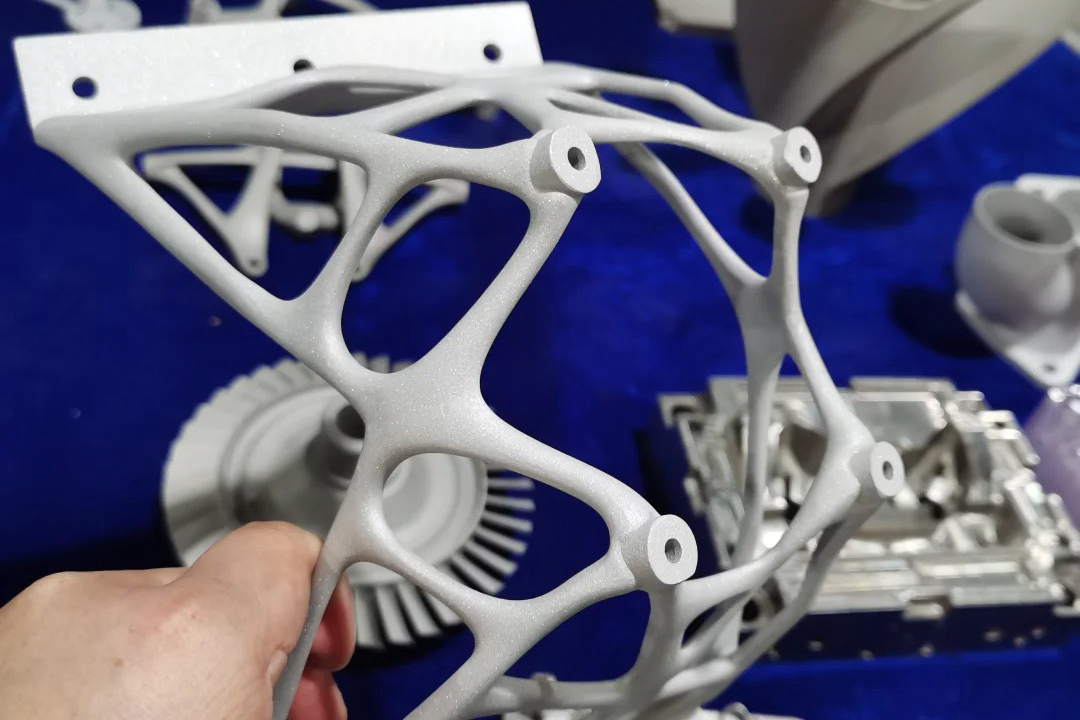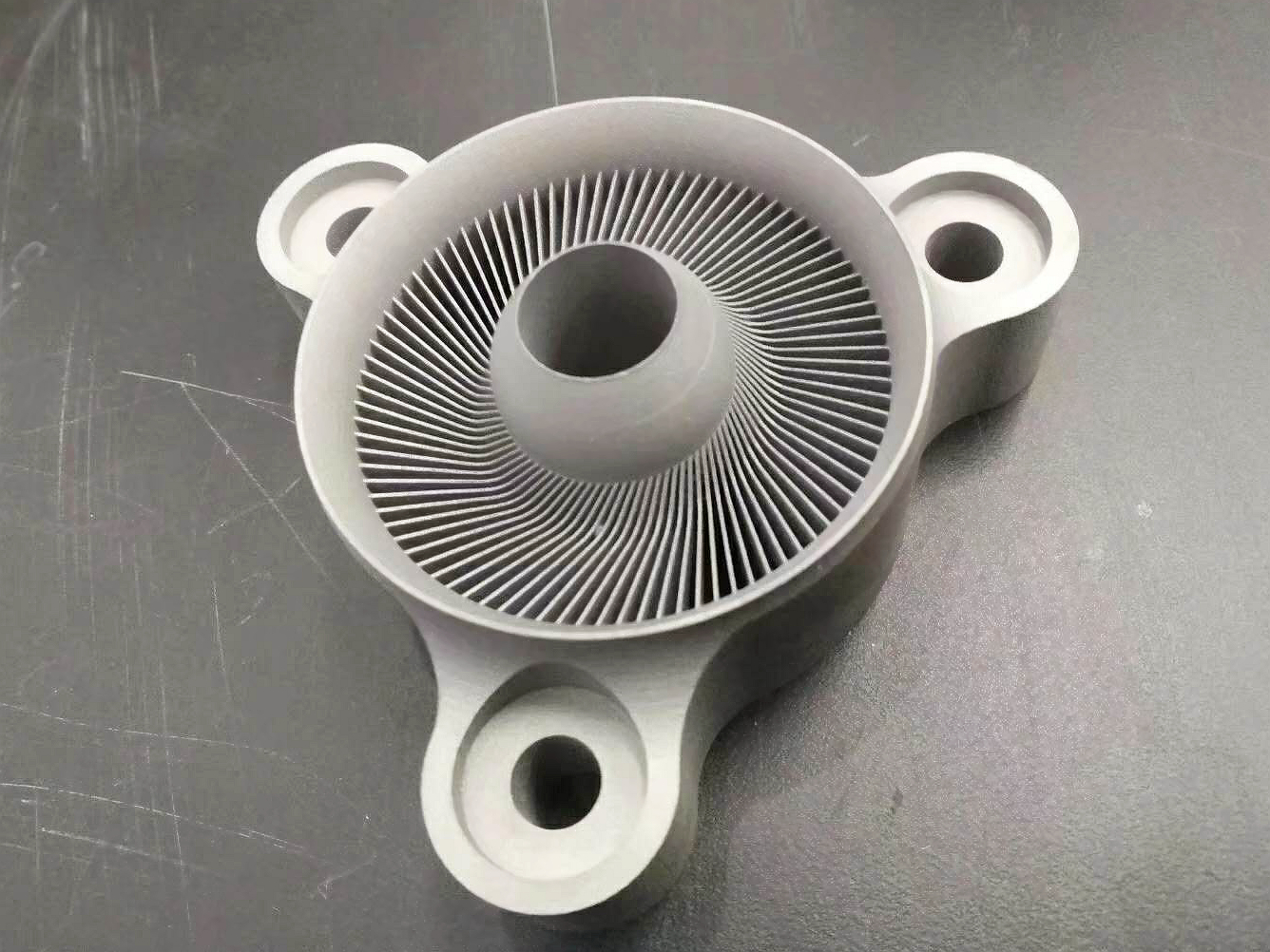Stainless Steel SUS304L
SUS304L 3D Printing Materials Introduction
Stainless Steel SUS304L is a low-carbon version of SUS304, offering excellent corrosion resistance and superior weldability without sensitization. It is ideal for applications requiring post-weld integrity and long-term exposure to corrosive environments.
Stainless steel 3D printing with SUS304L enables rapid production of high-purity parts such as pressure vessels, medical components, and fluid-handling systems that require structural integrity and clean surface finishes.
SUS304L Similar Grades Table
Country/Region | Standard | Grade or Designation |
|---|---|---|
USA | ASTM | 304L |
UNS | Unified | S30403 |
ISO | International | X2CrNi18-9 |
China | GB/T | 022Cr19Ni10 |
Germany | DIN/W.Nr. | 1.4307 |
SUS304L Comprehensive Properties Table
Category | Property | Value |
|---|---|---|
Physical Properties | Density | 7.93 g/cm³ |
Melting Point | 1390–1440°C | |
Thermal Conductivity (100°C) | 16.2 W/(m·K) | |
Electrical Resistivity | 74 µΩ·cm | |
Chemical Composition (%) | Iron (Fe) | Balance |
Chromium (Cr) | 18.0–20.0 | |
Nickel (Ni) | 8.0–12.0 | |
Carbon (C) | ≤0.03 | |
Manganese (Mn) | ≤2.0 | |
Mechanical Properties | Tensile Strength | ≥485 MPa |
Yield Strength (0.2%) | ≥170 MPa | |
Elongation at Break | ≥40% | |
Hardness (HRB) | ≤92 | |
Modulus of Elasticity | 193 GPa |
3D Printing Technology of SUS304L
SUS304L is commonly processed using Selective Laser Melting (SLM), Direct Metal Laser Sintering (DMLS), and Binder Jetting. These methods produce corrosion-resistant parts with excellent formability and low distortion risk during welding or post-processing.
Applicable Process Table
Technology | Precision | Surface Quality | Mechanical Properties | Application Suitability |
|---|---|---|---|---|
SLM | ±0.05–0.2 mm | Excellent | Excellent | Pressure Systems, Medical Parts |
DMLS | ±0.05–0.2 mm | Very Good | Excellent | Food Equipment, Sanitary Parts |
Binder Jetting | ±0.1–0.3 mm | Moderate | Good (post-HIP) | Structural and Piping Components |
SUS304L 3D Printing Process Selection Principles
SLM is preferred for parts requiring high strength, tight tolerances (±0.05 mm), and clean surfaces, especially in pressure equipment.
DMLS is ideal for sanitary or high-purity components, offering precision and uniform microstructure.
Binder Jetting is suited for cost-effective fabrication of large components with post-sintering and HIP used to improve final strength and corrosion performance.
SUS304L 3D Printing Key Challenges and Solutions
Due to its low carbon content, SUS304L is highly weldable but can show warping during printing. Optimized support design and preheating mitigate this risk.
Porosity may result from low fusion energy. Laser parameters such as 300–350 W power and 800–1000 mm/s scan speed improve density (>99.7%).
Oxidation and discoloration in post-heat processing can reduce corrosion resistance. Passivation removes surface iron and enhances durability in aggressive environments.
For parts requiring tighter surface finishes, CNC machining and electropolishing lower Ra to ≤1.6 µm.
Typical Post-Processing for SUS304L 3D Printed Parts
Stress Relief Heat Treatment improves dimensional stability without sensitizing the alloy. CNC Machining ensures tolerance control for high-pressure fittings and threaded parts. Electropolishing enhances corrosion performance for cleanroom and sanitary service parts. Passivation eliminates free iron to improve long-term resistance to oxidizing chemicals and moisture.
Industry Application Scenarios and Cases
SUS304L is widely used in:
Medical and Healthcare: Biocompatible surgical fixtures and implant guides.
Chemical Processing: Tanks, flanges, and fittings for acid and neutral chemical environments.
Food and Beverage: Valves, connectors, and vessels requiring low-carbon sanitary alloys.
Water Treatment: Nozzles and housing components in chloride-rich or oxygenated water systems.
One chemical plant application included DMLS-printed SUS304L valve components with complex flow paths, electropolished to Ra 0.8 µm, resulting in 45% faster production turnaround and longer service life.
FAQs
What is the difference between SUS304 and SUS304L in 3D printing?
Is SUS304L suitable for pressure vessels or sanitary applications?
What post-processing is recommended to enhance SUS304L corrosion resistance?
How accurate is SUS304L 3D printing with SLM and DMLS?
Can SUS304L be used in medical-grade or biocompatible applications?



